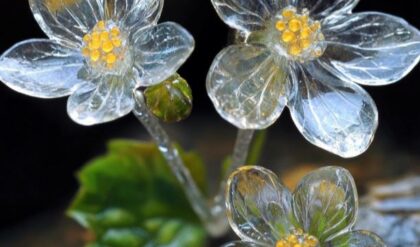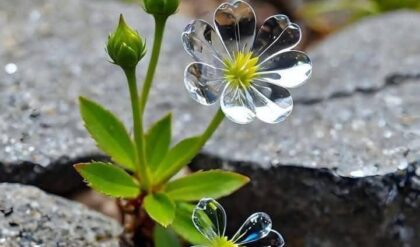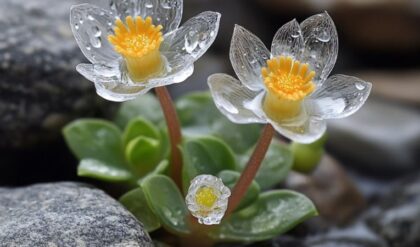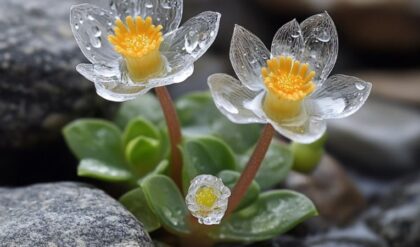The hibiscus flower is an alluring symbol of beauty and vitality, transcending mere aesthetics to weave itself into the cultural and medicinal fabric of societies across the globe. Its vibrant petals, available in a multitude of colors, beckon to both seasoned horticulturists and casual admirers alike, presenting an invitation to explore its rich lore. Each bloom not only captivates the eye but carries deep symbolic significance, epitomizing virtues such as love, beauty, and hospitality while evoking the warm embrace of summer days flooded with sunlight. For many cultures, hibiscus tea serves as more than just a refreshing beverage; it embodies a healthful elixir, representing vitality and wellness within traditional pharmacopoeia. This duality—a beautiful flower and a potent herbal remedy—combines to create a tapestry of enchantment where plant care meets spiritual connection, thus enriching one’s gardening experience.

Discovering Hibiscus Varieties
Hibiscus comes in numerous varieties, each boasting unique characteristics that cater to different gardening preferences. Some varieties thrive in coastal conditions, like the Sea Hibiscus, which symbolizes warmth and affability. Alternatively, common garden hibiscus plants are ideal for landscaping, renowned for their impressive blooms and robust growth. This vast selection allows gardeners to cultivate the enchanting hibiscus in myriad environments, transforming spaces from mundane to mesmerizing while accommodating diverse climatic conditions. Imagine, for instance, a suburban backyard adorned with hearty hibiscus bushes framing a sun-drenched patio—their blossoms offering bursts of color that dance with the wind, drawing all eyes to nature’s spectacle.
Coastal Hibiscus Varieties
Coastal hibiscus varieties, such as the Sea Hibiscus, thrive in humid, salt-tolerant environments, making them an excellent choice for seaside gardens or tropical regions. These resilient plants can withstand the harsh conditions often found near the ocean, including strong winds, salt-laden air, and sandy soils. Their vibrant blooms, often in shades of pink, red, or white, create a captivating contrast against the blues and greens of the surrounding landscape.
Common Garden Hibiscus Varieties
The more common garden hibiscus varieties are renowned for their impressive, large flowers and robust growth habits. These plants are ideal for landscaping, adding a touch of tropical flair to backyard oases, border plantings, and even container gardens. With a wide range of color options, from delicate pastels to bold, saturated hues, gardeners can choose varieties that seamlessly integrate with their desired aesthetic.
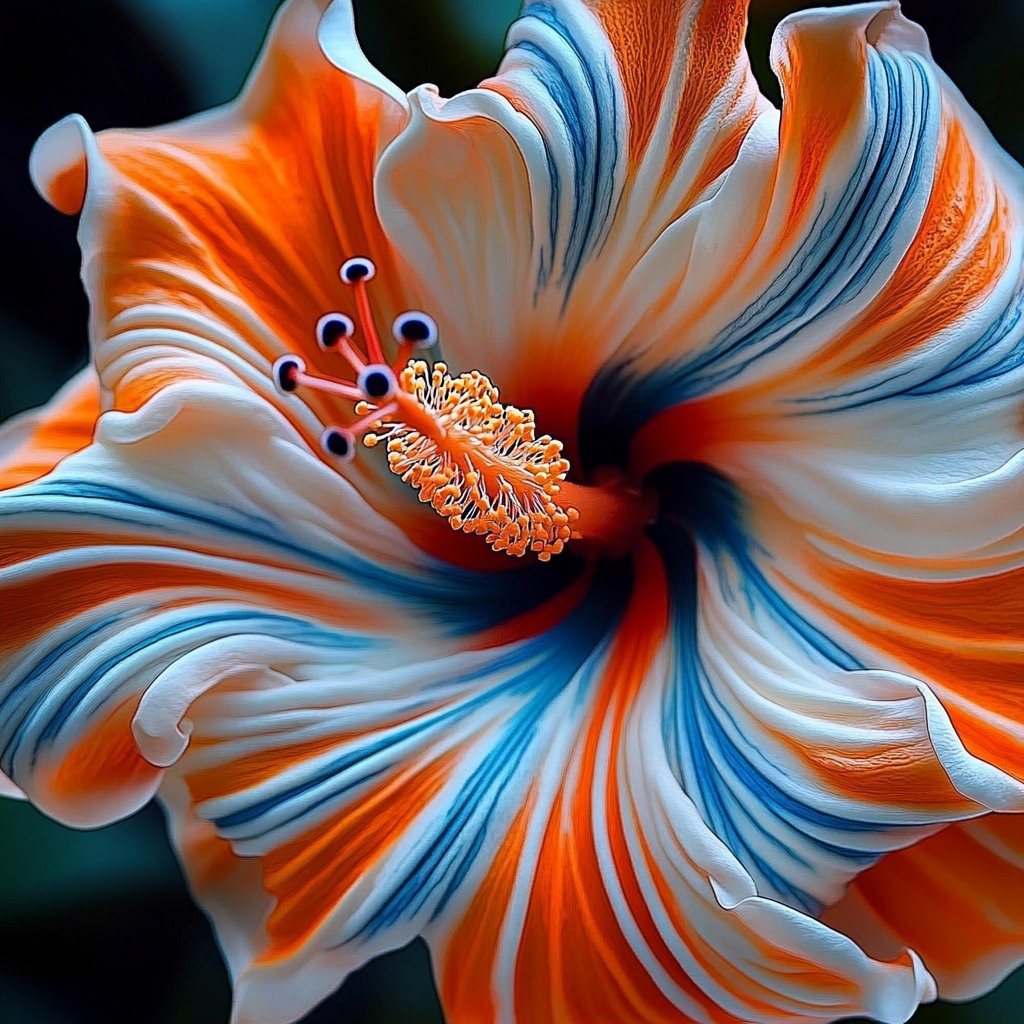
Rare and Specialty Hibiscus Varieties
Beyond the more ubiquitous coastal and garden varieties, the world of hibiscus boasts a wealth of rare and specialty cultivars that captivate the interest of avid horticulturists. These unique specimens may feature unusual color combinations, intricate petal patterns, or even double-flowering blooms that resemble delicate ruffles. Collecting and cultivating these exceptional hibiscus varieties can be a thrilling pursuit, allowing gardeners to explore the boundless diversity within this enchanting genus.
Cultural Significance and Symbolism
Across cultures, the hibiscus flower has taken on various symbolic meanings that enhance its charm. In some regions, it stands as a representation of femininity and love, often used in traditional wedding ceremonies or given as gifts to signify deep emotional connections. Furthermore, hibiscus holds medicinal properties that range from fever reduction to promoting heart health, showcasing its versatility beyond ornamental appeal. This blend of beauty and utility positions the hibiscus as a cherished species among gardeners and herbalists alike. One can imagine the profound connection fostered through cultivating these plants, as they become an embodiment of community, heritage, and tradition.
Hibiscus in Wedding Traditions
In many cultures, the hibiscus flower is deeply woven into wedding traditions, symbolizing love, fertility, and femininity. Brides may adorn their hair with delicate hibiscus blooms, or the flowers may be used to create intricate floral arrangements that grace the wedding ceremony and reception. This symbolic use of the hibiscus highlights its enduring association with the celebration of love and the joining of two lives.
Medicinal Properties of Hibiscus
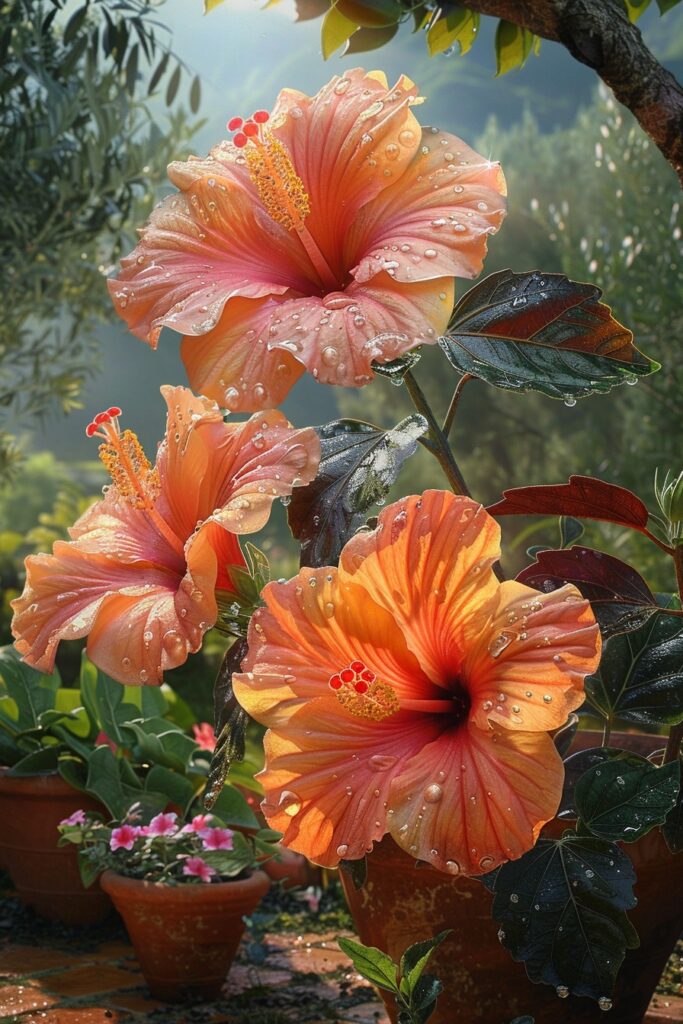
Beyond its captivating visual appeal, the hibiscus flower has long been revered for its medicinal properties within traditional herbal practices. Hibiscus tea, for instance, has been used to help reduce fever, promote heart health, and even aid in the management of high blood pressure. The vibrant calyces of the hibiscus plant are rich in antioxidants and other beneficial compounds, making them a valuable addition to holistic wellness regimes.
Hibiscus in Cultural Symbolism
The hibiscus flower has transcended its botanical identity to become a symbol of cultural identity and heritage in various regions around the world. In Hawaii, the hibiscus is closely associated with the island’s tropical charm and warm hospitality, while in China, it is revered as a symbol of beauty and summer. By embracing the hibiscus as a cultural touchstone, communities have woven this enchanting flower into the fabric of their traditions, strengthening the bond between people and the natural world.
Cultivation Tips for Enthusiasts and Beginners Alike
For those captivated by the enchanting allure of hibiscus, understanding how to grow and care for these stunning flowers is essential. They thrive in well-drained soils rich in organic matter and require considerable amounts of sunlight to reach their maximum potential. Engaging in hibiscus cultivation can serve as a therapeutic escape, encouraging mindfulness as one learns to be attuned to the needs of these floral wonders. From selecting the right soil to mastering watering techniques, the practice of nurturing hibiscus can enrich one’s life with patience and observation—attributes that are often rare in today’s fast-paced world. Moreover, the medicinal applications of hibiscus extend into practices like natural dyeing and creating skin-care products, bridging the gap between agricultural practices and holistic self-care methodologies.
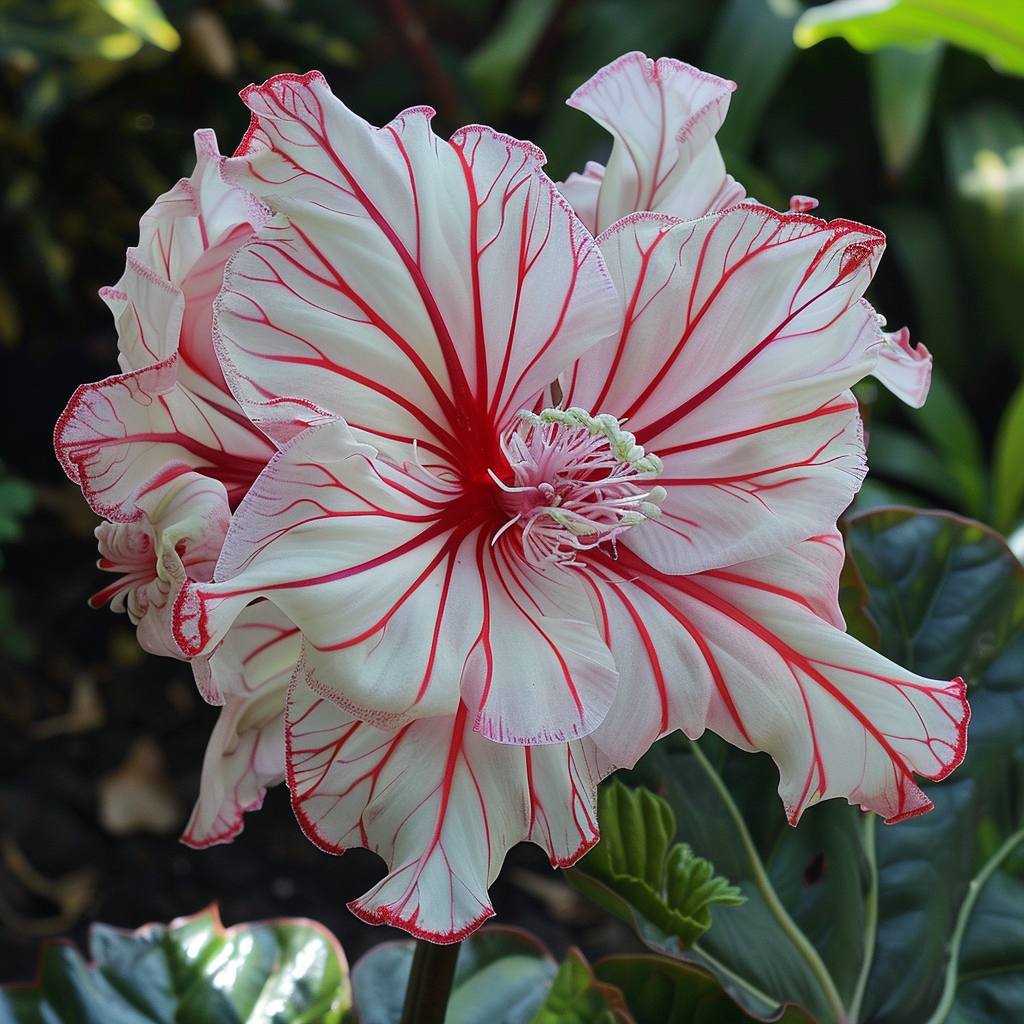
Soil Requirements for Hibiscus
Hibiscus plants thrive in well-drained, nutrient-rich soil that is high in organic matter. Amending the soil with compost or aged manure can provide the necessary nutrients and improve drainage, creating an optimal growing medium for these tropical beauties. Avoid heavy, clay-based soils, as they can lead to waterlogging and root rot, which can be detrimental to the plant’s health.
Sunlight and Temperature Needs
Hibiscus plants require ample sunlight to reach their full potential and produce an abundance of vibrant blooms. Aim to provide at least six hours of direct sunlight per day, preferably in the morning or early afternoon when the sun’s rays are less intense. In cooler climates, hibiscus may benefit from protection from harsh winds and frost, as they are generally more suited to warm, tropical or subtropical conditions.
Watering and Humidity Considerations
Maintaining consistent moisture is crucial for the health and vigor of hibiscus plants. Water regularly, ensuring the soil remains moist but not waterlogged. Avoid letting the soil dry out completely between waterings, as this can lead to stress and reduced flower production. Additionally, providing high humidity levels, either through natural means or by using a pebble tray or mister, can help mimic the tropical conditions these plants thrive in.
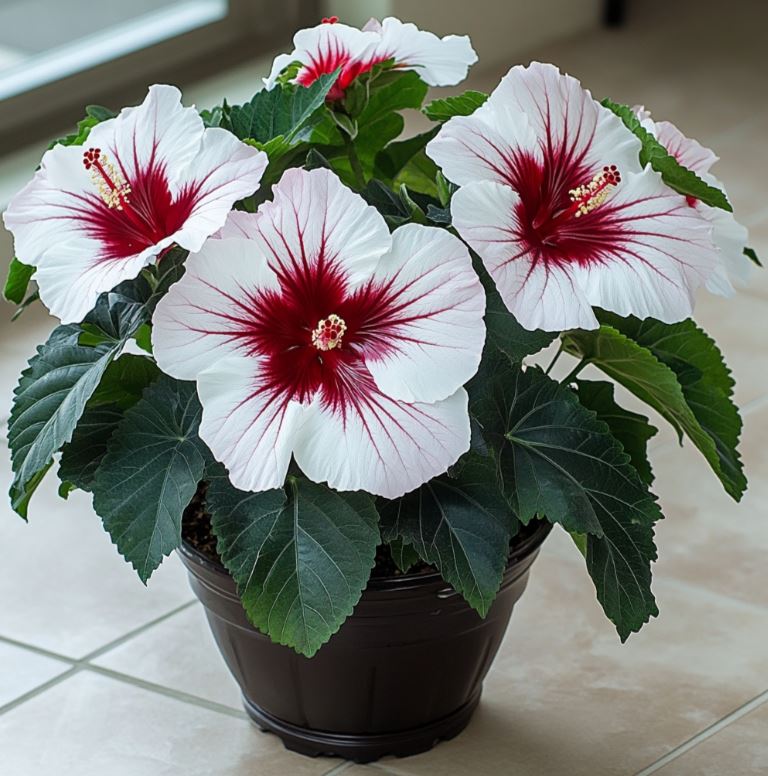
Pruning and Deadheading Techniques
Proper pruning and deadheading can greatly enhance the appearance and longevity of hibiscus plants. Regularly removing spent blooms encourages the plant to direct its energy into producing new flowers, resulting in a continuous display of vibrant color. Selective pruning, focusing on removing any damaged, diseased, or wayward growth, can also help maintain the plant’s shape and promote healthy, robust growth.
Overwintering and Cold Protection
In cooler climates, overwintering hibiscus plants can be a crucial step to ensure their survival and continued growth. Depending on the severity of the winter, this may involve bringing potted plants indoors, insulating them against frost, or even pruning the plant back to the ground and allowing it to regrow in the spring. Understanding the specific cold tolerance of your hibiscus variety can help you devise the most suitable overwintering strategy.
A Plant for Reflection
Imagine a tranquil garden, where the soft rustle of leaves harmonizes with birdsong. Centered around this peaceful setting stands a vibrant hibiscus bush. Such imagery underscores the idea that the act of creating a beautiful space dedicated to growth and reflection can enhance mental well-being. As the blooms unfold under the sun, they coax genuine moments of serenity and gratitude from those who observe them—a gentle reminder of life’s transitory beauty. Furthermore, engaging in hibiscus gardening offers a chance to reflect on broader environmental themes, especially as pressing issues like climate change demand more resilient gardening practices. Incorporating species like hibiscus, known for thriving in varied climates, could imply a shift towards implementing sustainable and beautiful choices in our personal green spaces. Gardening becomes a statement; indeed, a small step towards fostering biodiversity and conservation. In every sense, the enchanting hibiscus encapsulates a world of vibrant colors, meanings, and opportunities for connection—inviting individuals from all walks of life to dive deeper into its wondrous domain and cultivate both a love for nature and themselves.
Hibiscus and Mental Wellbeing
The act of cultivating and caring for hibiscus plants can have a profound impact on one’s mental well-being. The vibrant blooms and lush foliage create a soothing, meditative environment that encourages mindfulness and connection with the natural world. Engaging in the rituals of tending to these flowers, from watering to pruning, can foster a sense of calm and purpose, providing a respite from the stresses of daily life.
Hibiscus and Sustainable Gardening
As the global community grapples with the challenges of climate change, the hibiscus plant emerges as a shining example of resilience and adaptability. Many varieties of hibiscus are known for their ability to thrive in diverse climates, from tropical coastlines to more temperate regions. By incorporating these versatile plants into our personal gardens, we can contribute to the overall biodiversity of our local ecosystems and showcase the beauty of sustainable gardening practices.
Hibiscus and Spiritual Connections
The hibiscus flower has long been imbued with spiritual and symbolic significance across various cultures. Its captivating beauty and alluring presence can inspire a sense of wonder and connection with the natural world, encouraging individuals to engage in practices of reflection, gratitude, and reverence for the delicate balance of the living systems that sustain us. Cultivating hibiscus can thus become a pathway to deeper self-exploration and a greater appreciation for the interconnectedness of all life.
Conclusion
The enchanting hibiscus is a flower that transcends the realm of mere aesthetics, weaving itself into the cultural, medicinal, and spiritual tapestry of societies around the globe. From its vibrant blooms to its potent medicinal properties, this captivating plant invites us to embark on a journey of discovery, uncovering its rich history, symbolic meanings, and the profound joy that can be found in its cultivation. Whether you are a seasoned horticulturist or a budding gardener, the hibiscus presents an opportunity to connect with the natural world, foster mindfulness, and cultivate a deeper appreciation for the beauty that surrounds us. By embracing the enchanting hibiscus, we not only transform our physical spaces but also nourish our inner landscapes, creating a harmonious dance between the tangible and the ethereal.
